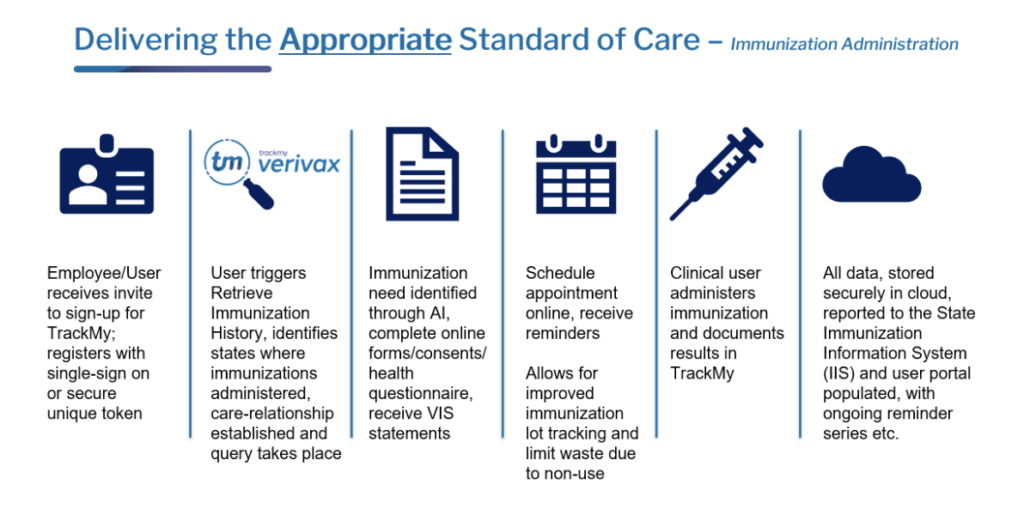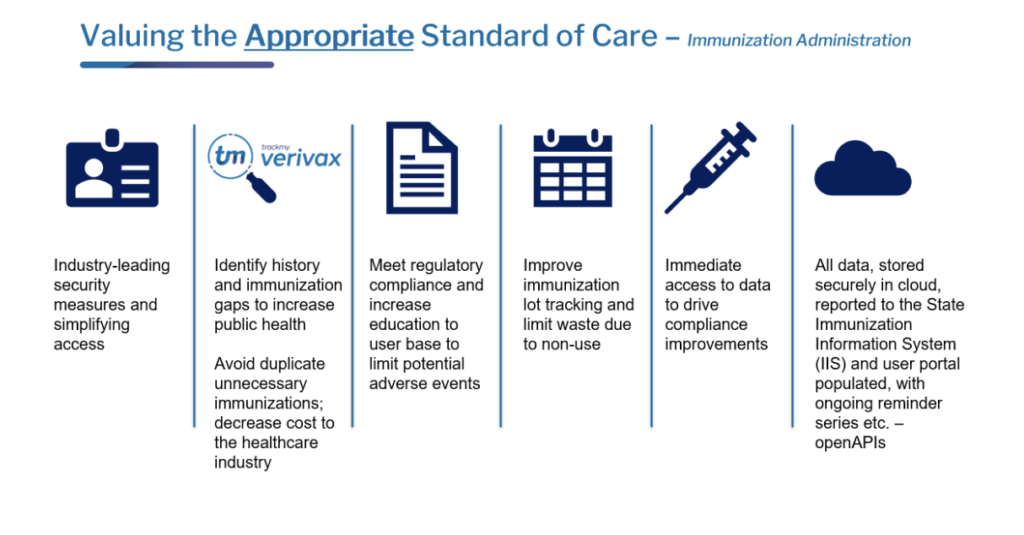By: Jeremy Elias, Founder and CEO – TrackMy
Immunizations continue to play an essential role in protecting individuals from a wide range of diseases across direct patient care and employee health, it is essential that an ‘appropriate standard of care’ is established to ensure their effective administration. In this blog, we will discuss how a more data-driven approach to immunization administration, involving the use of AI, can help improve immunization rates while also reducing healthcare costs.
Did you know that healthcare extends beyond the walls of the hospital, and direct patient-care – especially in today’s environment living post-pandemic? At TrackMy, we focus on aiding organizations to drive health compliance and reduce overall cost within employee, occupational, and student health. Areas we assist clients daily with (to name a few), are immunization verification, administration and tracking, respirator fit testing, surveillance and exposure tracking, and online scheduling – all with a focus to reduce unnecessary healthcare costs and drive increases to public health across targeted populations.
As we have begun streamlining immunization administration/clinic workflows (the nexus of this blog) – like annual flu campaigns, HepB, MMR, and COVID series – we have noticed that it has become acceptable within employee health to administer a set of immunizations without following an ‘appropriate standard of care’ (a term coined at TrackMy, and further explained in Exhibit 1 below and here-in) – and together with our partners and clients we are setting out to change the paradigm daily. All the work that is going on within employee health is fantastic (and thoughts noted here, are nothing more than to explain there are paths to drive even further improvements), to deliver the ‘appropriate standard of care’ we simply need to continue to educate and work with the healthcare industry that a more appropriate workflow does indeed exist, and it exists with TrackMy!
The first step in establishing this ‘appropriate standard of care’ is to query an individual’s immunization history from the Immunization Information System (IIS) in the state in which immunizations were received. The IIS is a secure, web-based system that collects and consolidates immunization data from multiple sources across a given state (primarily healthcare providers, departments of health etc.). Through accessing an individual’s vaccine history from the IIS, healthcare providers can determine which immunizations are due, which ones have been administered, and which ones are still needed. This step is done through TrackMy (in working with our provider network), and leveraging TrackMy AI (“AI”) to determine immunization gaps, verifications, and new administration recommendations. An employee/individual (‘user’) receives access to TrackMy, creates a secure digital account (typically through single-sign on or identity verification – more exciting news to share around industry-leading identity verification to come within our TrackMy Member Portal), accepts legal consent, and establishes the care relationships with our provider network in order to perform the service.

The next step is to identify gaps in a user’s immunization history using AI. By analyzing a user’s immunization history and comparing it to current immunization recommendations, AI algorithms identify which immunizations are missing and recommend the appropriate course of action (ie – schedule an online appointment with the employee health clinic to receive a missing immunization). This approach allows healthcare providers to make more informed decisions about which immunizations to administer and when, helping to improve immunization rates and reduce the risk of immunization-preventable diseases.
Another way we are reducing healthcare costs associated with immunization administration is to reduce the need for blood titers (a laboratory test that measures the presence and amount of antibodies in blood to prove immunity to a disease). Traditionally, healthcare providers have relied on blood titers to determine an individual’s immune response to certain immunizations. However, AI algorithms can analyze an user’s immunization history to determine if they have already received a specific immunization or if they have had a natural infection that provides immunity (through tracking test results in TrackMy). By reducing the need for blood titers, healthcare providers can save time and money, while also reducing the overall cost of healthcare for payers and patients.

In conclusion, establishing and delivering on an ‘appropriate standard of care’ for immunization administration, involving the use of AI, can help improve immunization rates while also reducing healthcare costs (further noted in Exhibit 2 below). By querying an individual’s immunization history from the IIS, identifying gaps with AI, and reducing the need for lab blood titers, healthcare providers can make more informed decisions about which immunizations to administer, when to administer them, and reduce the need for unnecessary lab tests (a very large, unnoticed healthcare cost on the employee health/onboarding side). This approach not only benefits individuals, but also healthcare providers and payers, by reducing the overall cost of healthcare and improving the quality of care provided.
For more information on TrackMy, please contact us at – info@trackmysolutions.us – and/or view a live demo here.

